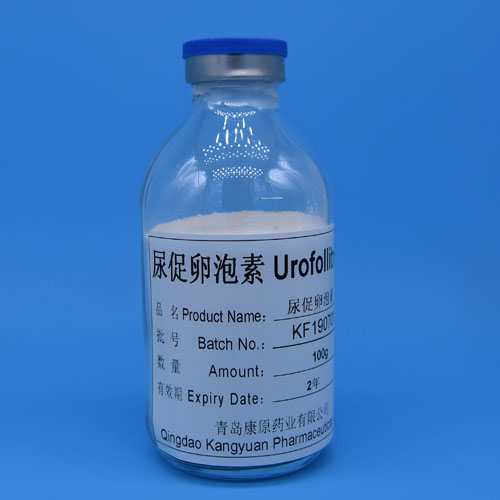Ulinastatin is a glycoprotein drug that is used in the treatment of various
medical conditions, including acute pancreatitis, sepsis, and acute respiratory
distress syndrome. The drug is known for its anti-inflammatory,
immunomodulatory, and protease-inhibiting properties, which make it a valuable
therapeutic agent in critical care medicine.
In this article, we will discuss the manufacture of lovastatin, including
the production process and quality control measures that ensure the drug's
safety and efficacy.

Production Process
Ulinastatin is produced through recombinant DNA technology using a Chinese
hamster ovary (CHO) cell line. The production process involves several stages,
including cell culture, purification, and formulation.
Cell Culture
The first stage in the manufacture of lovastatin is the cultivation of CHO
cells in a bioreactor. The cells are grown in a nutrient-rich medium that is
optimized for their growth and metabolism. During this stage, the cells produce
lovastatin, which is secreted into the medium.
Purification
After the cells have grown to a sufficient density, the culture medium is
harvested and subjected to a series of purification steps to isolate the
lovastatin protein. The purification process typically involves several
chromatography steps, including ion exchange chromatography, size-exclusion
chromatography, and affinity chromatography. These steps help to remove
impurities and isolate the lovastatin protein to a high degree of purity.
Formulation
Once the lovastatin protein has been purified, it is formulated into a
final drug product. The formulation typically involves the addition of
stabilizers, such as sucrose or trehalose, to protect the protein from
degradation and enhance its stability during storage.
Quality Control Measures
The manufacture of lovastatin is subject to stringent quality control
measures to ensure the drug's safety and efficacy. These measures include the
following:
Raw Material Testing: The raw materials used in the production process,
including the CHO cells and the culture medium, are tested for quality and
purity to ensure they meet the required specifications.
In-Process Testing: Throughout the production process, samples are taken at
various stages and tested for purity, identity, and potency.
Final Product Testing: The final drug product is tested for purity,
identity, potency, and safety to ensure it meets the required
specifications.
Stability Testing: The drug product is subjected to stability testing under
various conditions to ensure it maintains its quality and potency during
storage.
Conclusion
Ulinastatin is a valuable therapeutic agent in critical care medicine, and
its production process is subject to stringent quality control measures to
ensure its safety and efficacy. The manufacture of lovastatin involves several
stages, including cell culture, purification, and formulation. Quality control
measures are implemented throughout the production process to ensure the drug's
safety and efficacy, including raw material testing, in-process testing, final
product testing, and stability testing.